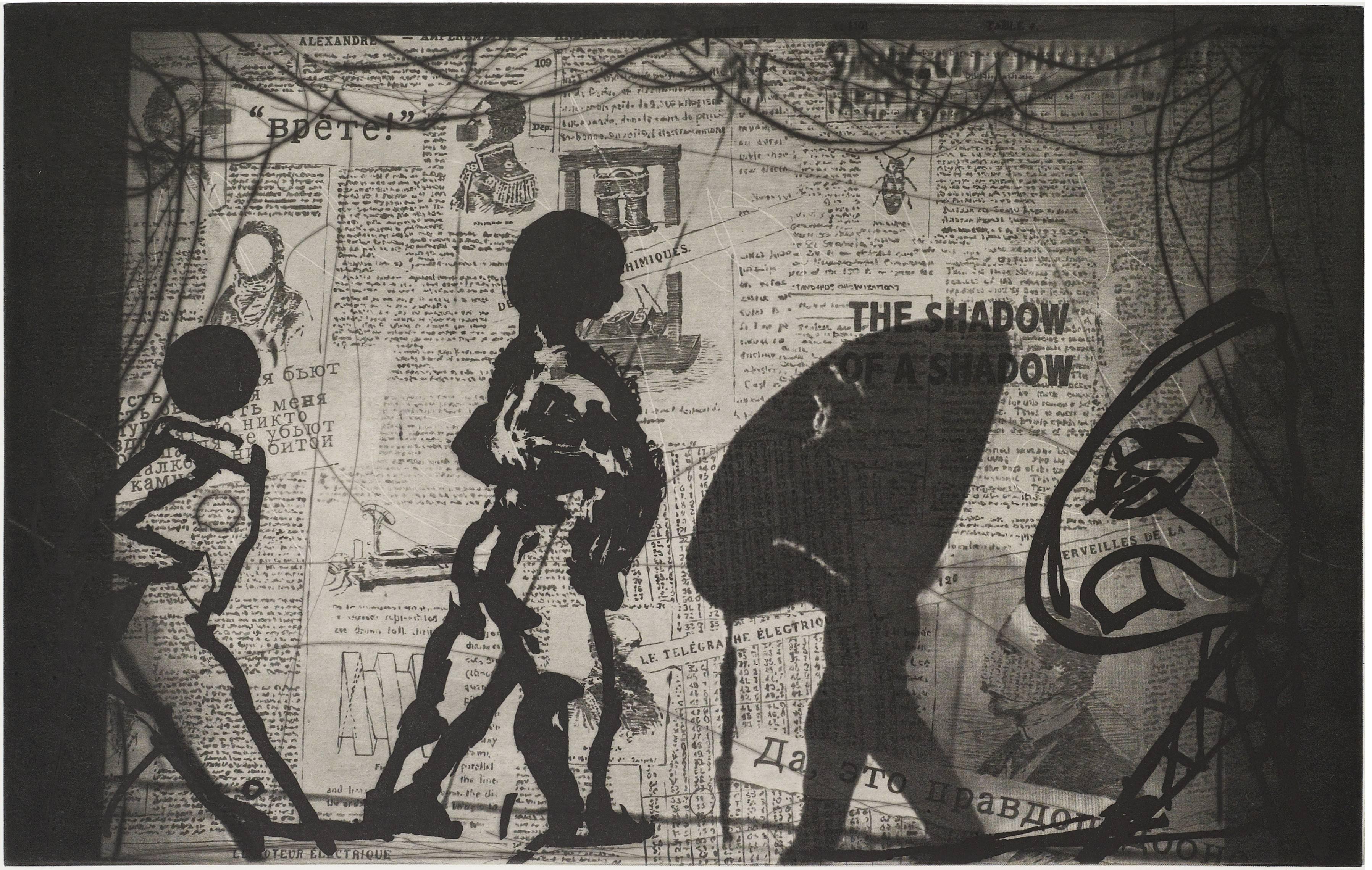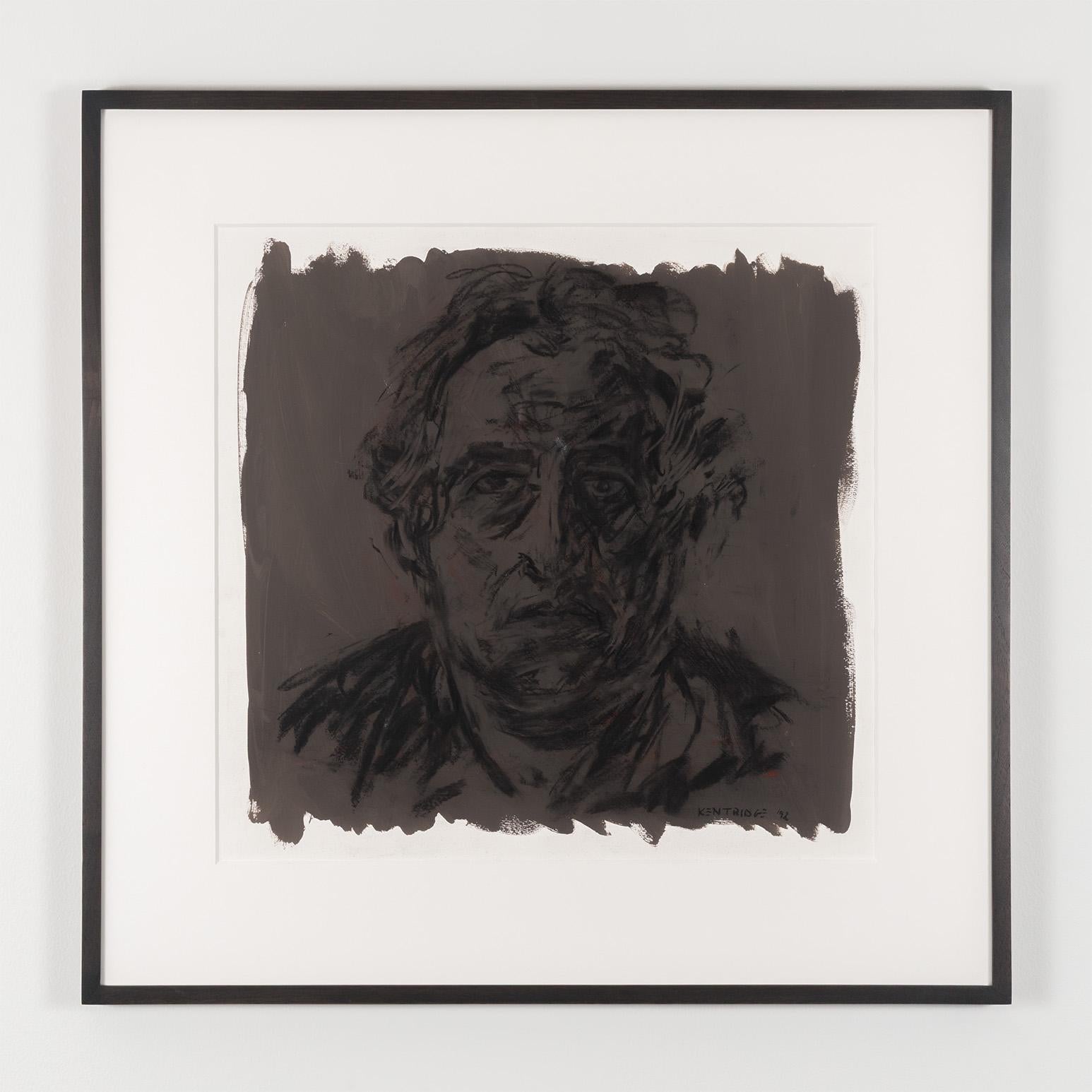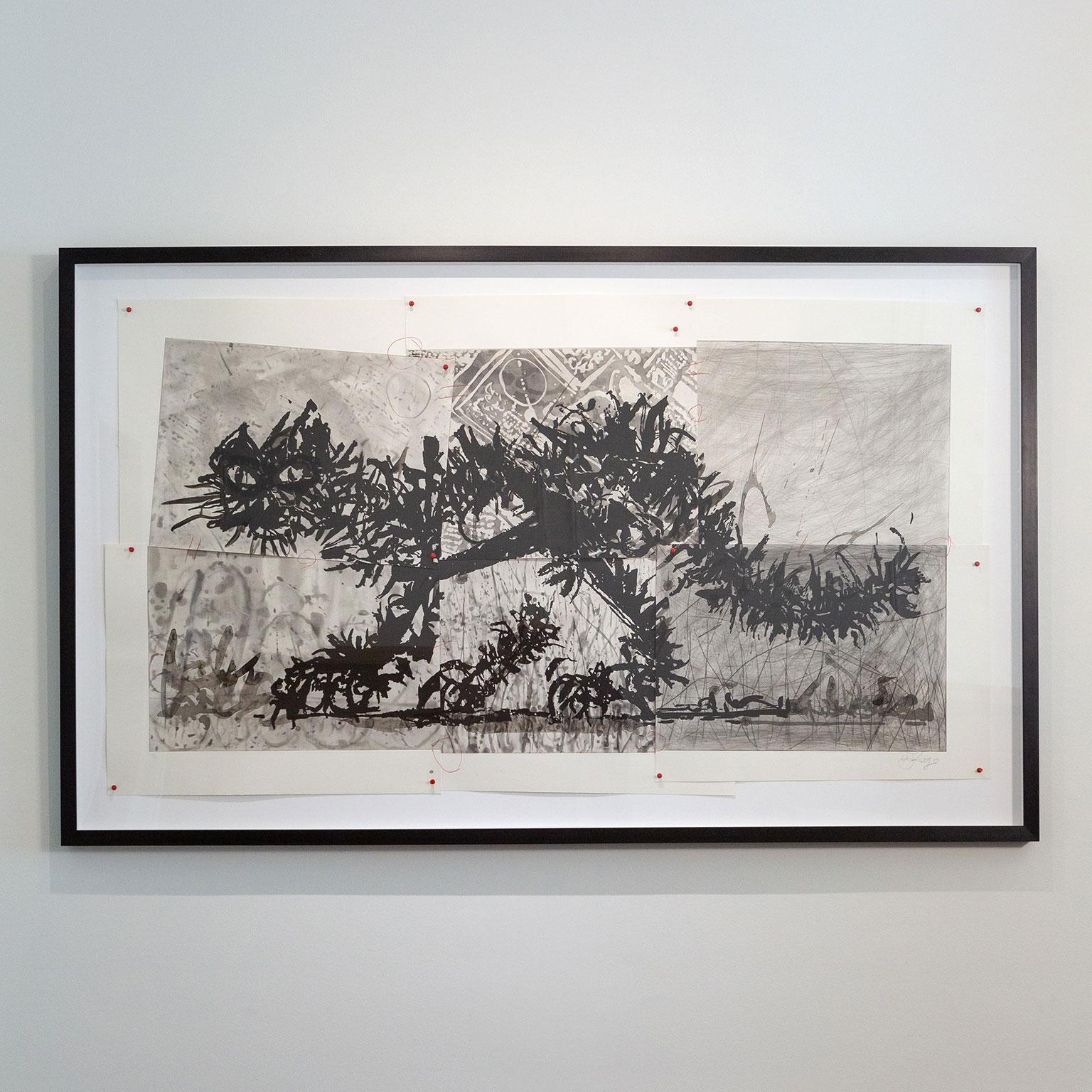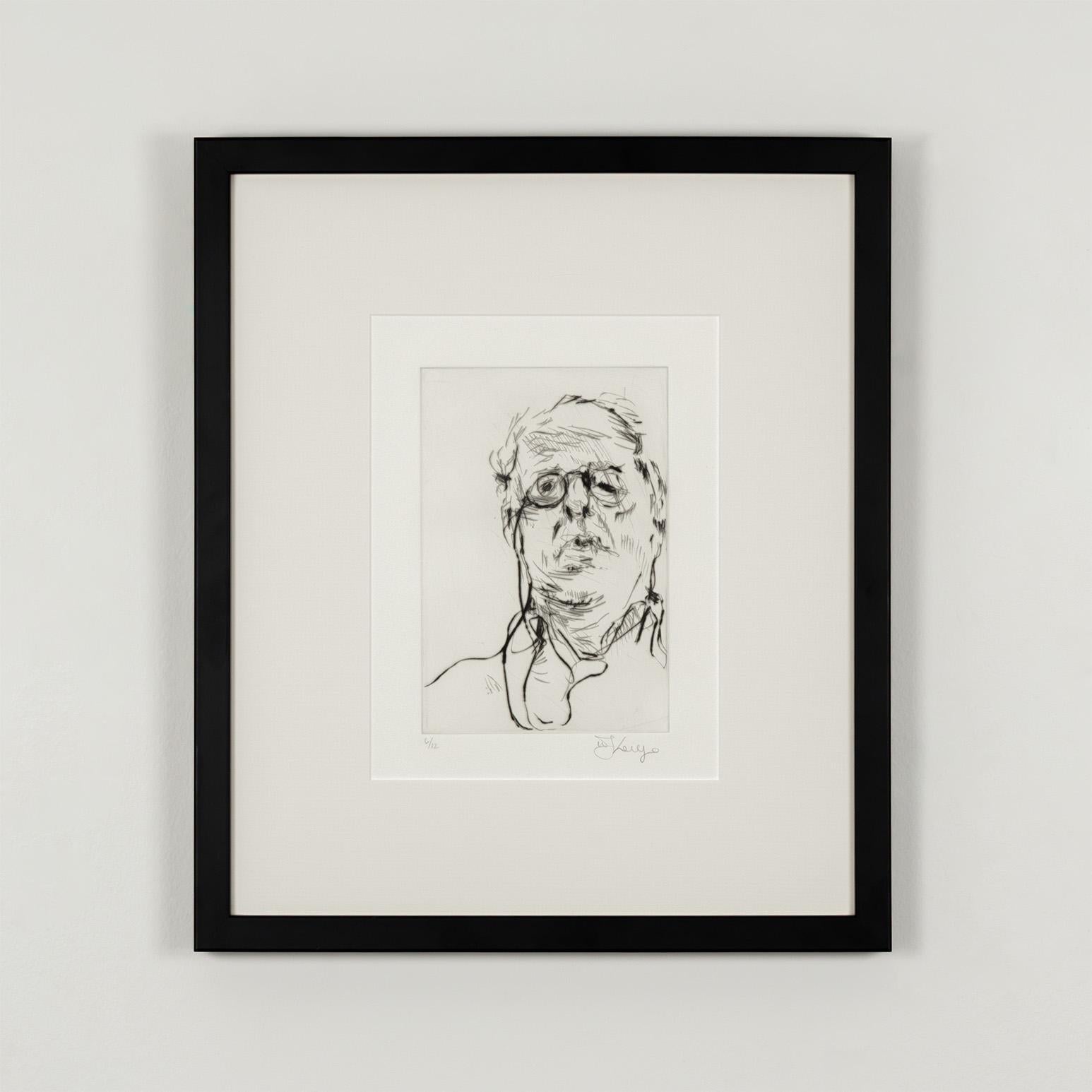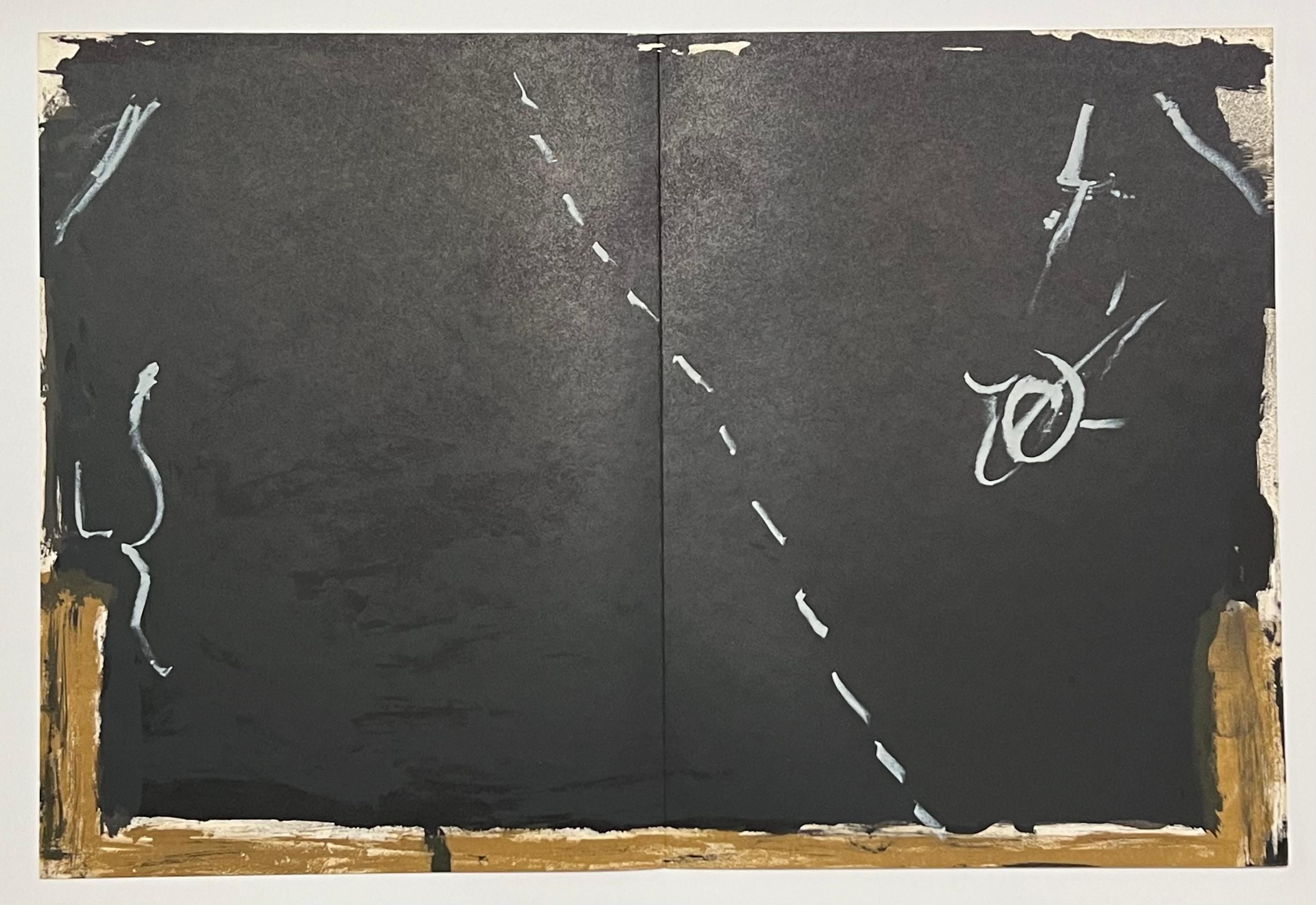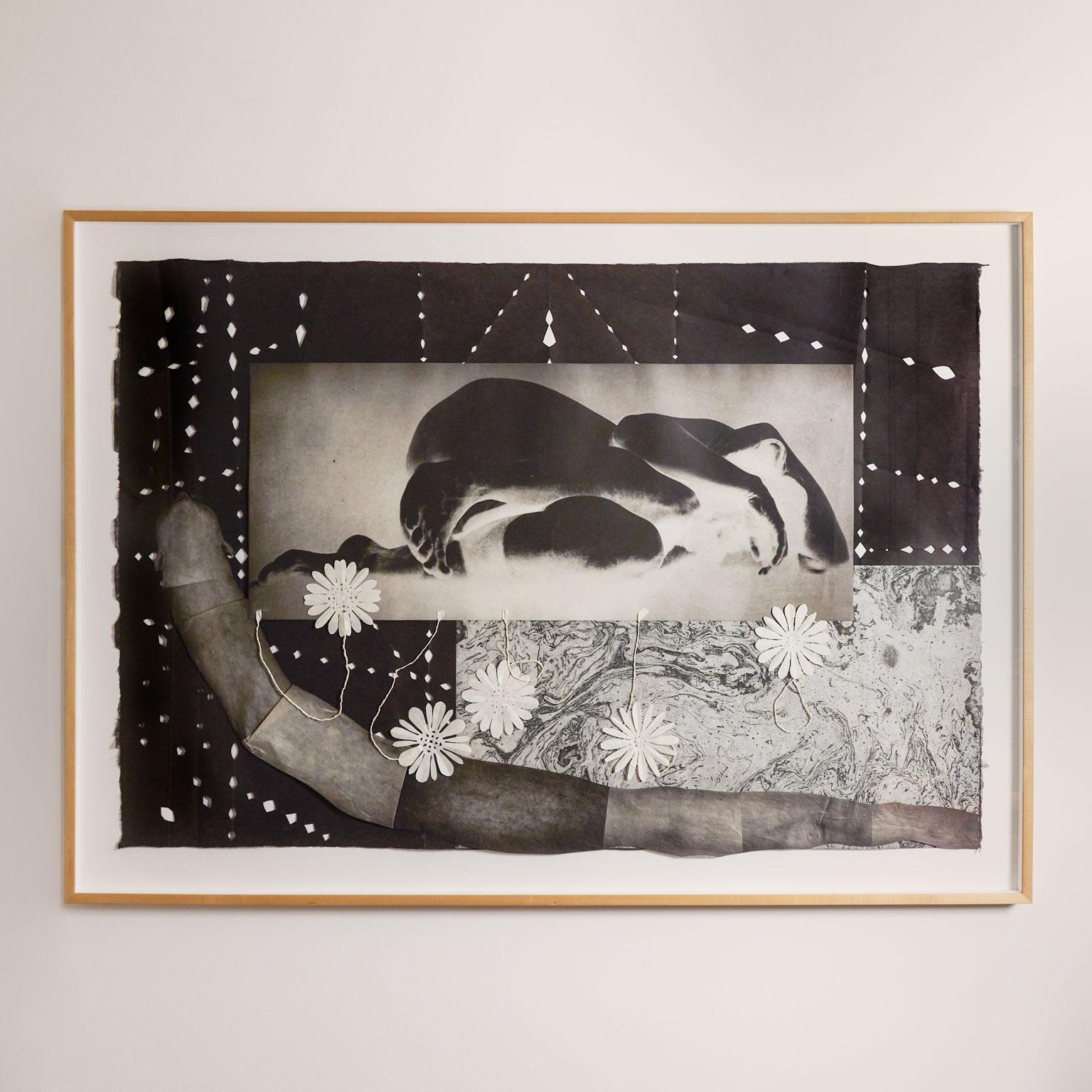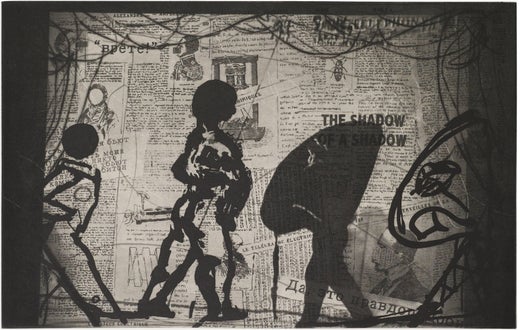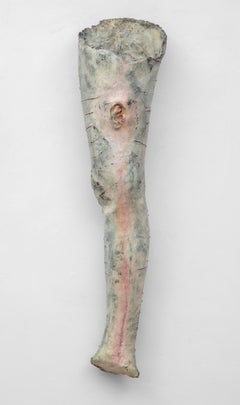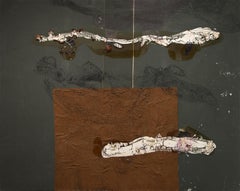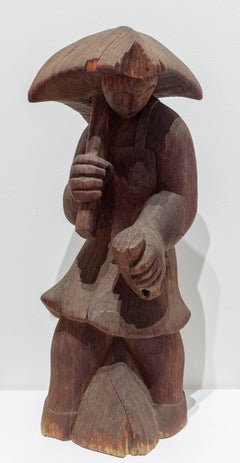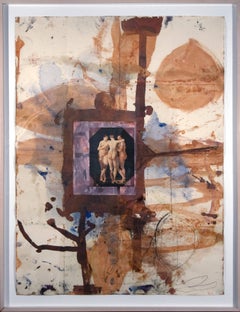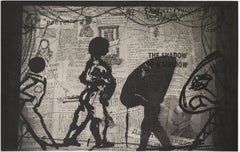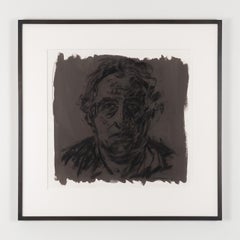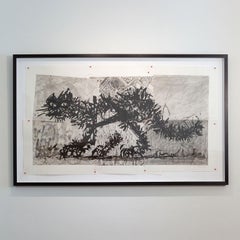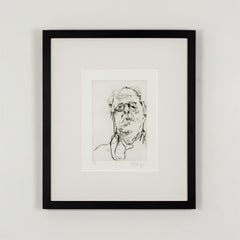Items Similar to Porter Series: Carte L'Europe (Shower Woman)
Video Loading
Want more images or videos?
Request additional images or videos from the seller
1 of 12
William KentridgePorter Series: Carte L'Europe (Shower Woman)2006-2007
2006-2007
$185,000
£139,704.61
€159,948.91
CA$261,268.36
A$285,242.51
CHF 149,540.98
MX$3,464,380.10
NOK 1,867,523.33
SEK 1,763,439.99
DKK 1,193,848.29
About the Item
"Porter Series: Carte L'Europe (Shower Woman)" is a tapestry by South African artist William Kentridge. It is edition 1 of 5 (plus 2 APs) and signed verso "W. Kentridge".
William Kentridge is a South African graphic artist, filmmaker, and theatre arts activist especially noted for a sequence of hand-drawn animated films he produced during the 1990s. The pungent humanism he revealed in these and other works echoed a larger European tradition of artists such as Honoré Daumier, Francisco de Goya, and William Hogarth.
Kentridge, whose father was a noted antiapartheid lawyer, attended the University of Witwatersrand in Johannesburg (1973–76) and the now-defunct Johannesburg Art Foundation (1976–78). At various times in the 1970s and ’80s, he worked as an actor, playwright, set designer, and theatrical director, and he studied mime and theatre in Paris in the early 1980s. In 1992 he began an ongoing collaboration involving multimedia performances with Handspring Puppet Theatre (founded 1981) in Cape Town.
As is clear from both his early training and his later artistic output, Kentridge’s interest in the visual arts was rooted in its connection with the theatrical arts. The narrative structure and character development in his films reflect this connection. While Kentridge pursued several avenues as an artist, at the centre of his work was a sequence of short animated films. To produce them, he made a rough charcoal drawing, photographed it, altered the drawing slightly, photographed it again, and so on. Kentridge’s original drawings are often completely effaced by their successors.
Many of these films—including Johannesburg, 2nd Greatest City After Paris (1989) and Felix in Exile (1994)—follow the fortunes of the greedy capitalist Soho Eckstein and his alter ego, the sensitive and artistic Felix Teitelbaum. They present modern South Africa as reflective of the spiritual, ecological, and emotional crises of late capitalism.
Kentridge later established himself as a consummate figure in the performing arts, particularly for his innovative stagings of the operas The Nose (2010) and Lulu (2015) at New York’s Metropolitan Opera and Wozzeck (2017) at the Salzburg Festival. Critics especially praised his layered use of projected drawings, woodcuts, and animation. His interdisciplinary performance pieces also drew acclaim, notably his rendition of Kurt Schwitters’s 1932 sound poem Ursonate (2017) and of The Head and the Load (2018), a tribute to the African soldiers who served in World War I.
Provenance:
Galleria Lia Rumma, Milan, Italy
Private Collection, acquired from the above
Christie's (New York, NY), March 6, 2014: "First Open Post War and Contemporary Art Sale," Sale 2824, Lot 105
Private Collection, acquired from the above
Exhibition:
Centro de arte contemporáneo de Málaga (Málaga, Spain), “William Kentridge: Won't You Join The Dance?,” February 14 - May 13, 2012; another example exhibited
Literature:
Basualdo, Carlos “William Kentridge: Tapestries,” (New Haven, CT: Yale University Press, 2008)
- Creator:William Kentridge (1955, South African)
- Creation Year:2006-2007
- Dimensions:Height: 96.375 in (244.8 cm)Width: 137.875 in (350.21 cm)
- Medium:
- Period:
- Condition:
- Gallery Location:Palm Desert, CA
- Reference Number:Seller: 413961stDibs: LU9310579332
William Kentridge
William Kentridge (b. 1955) is an internationally acclaimed South African artist renowned for his dynamic prints, drawings, large-scale installations, and animated films. Kentridge balances universal experiences with the complexity of South African political history and society. Born in Johannesburg to two prominent lawyers active in anti-apartheid efforts, Kentridge’s proximity to the dissolution of apartheid gave him a unique social sensitivity. His upbringing would shape the socio-political lens that informed his work as an artist.
About the Seller
4.8
Recognized Seller
These prestigious sellers are industry leaders and represent the highest echelon for item quality and design.
Established in 1996
1stDibs seller since 2011
113 sales on 1stDibs
Typical response time: 6 hours
- ShippingRetrieving quote...Shipping from: Jackson, WY
- Return Policy
Authenticity Guarantee
In the unlikely event there’s an issue with an item’s authenticity, contact us within 1 year for a full refund. DetailsMoney-Back Guarantee
If your item is not as described, is damaged in transit, or does not arrive, contact us within 7 days for a full refund. Details24-Hour Cancellation
You have a 24-hour grace period in which to reconsider your purchase, with no questions asked.Vetted Professional Sellers
Our world-class sellers must adhere to strict standards for service and quality, maintaining the integrity of our listings.Price-Match Guarantee
If you find that a seller listed the same item for a lower price elsewhere, we’ll match it.Trusted Global Delivery
Our best-in-class carrier network provides specialized shipping options worldwide, including custom delivery.More From This Seller
View AllClub
By Kiki Smith
Located in Palm Desert, CA
"Club" is a bronze cast sculpture made by Kiki Smith in 1992. The artwork is 33 x 8 x 6 inches and weighs less than 50 lbs. The work is signed and dated, lower middle, "Kiki Smith 19...
Category
Late 20th Century Abstract Abstract Sculptures
Materials
Bronze
$180,000
Untitled
By Julian Schnabel
Located in Palm Desert, CA
A work by Julian Schnabel. This large scale, Untitled, abstract, oil, resin, gesso, fabric and leather on seamed dropcloth is executed in a dark palette of rust, gray and black with ...
Category
1990s Neo-Expressionist Abstract Paintings
Materials
Leather, Gesso, Fabric, Resin, Oil
$250,000
Woman with Square Umbrella
By Alexander Calder
Located in Palm Desert, CA
A sculpture in wood depicting a woman holding an umbrella. "Woman with Square Umbrella" by Post War artist Alexander Calder is signed underneath, "Calder." "Woman with a Square Umbre...
Category
1920s Post-War Figurative Sculptures
Materials
Wood
Untitled Drawing
By Anton Henning
Located in Palm Desert, CA
A mixed media on paper by contemporary artist Anton Henning. This work is one of Henning’s "Interieur" paintings, a complex, pictorial systems of paintings within paintings...
Category
1980s Contemporary Mixed Media
Materials
Mixed Media, Paper
$32,000 Sale Price
20% Off
Prime Pump from ROCI USA
By Robert Rauschenberg
Located in Palm Desert, CA
A print by Robert Rauschenberg. "Prime Pump from ROCI USA" is a color screenprint on paper and Lexan print from the Wax Fire Works Series. "Prime Pump from ...
Category
1990s Post-War Abstract Prints
Materials
Paper, Screen
Untitled (yellow, red + brown)
By Fiona Rae
Located in Palm Desert, CA
A painting by Fiona Rae. "Untitled (yellow, red + brown)" is a contemporary abstract painting, oil on canvas in a colorful palette of reds, blues, and browns by female artist Fiona R...
Category
Late 20th Century Contemporary Abstract Paintings
Materials
Canvas, Oil
You May Also Like
THE NOSE, photogravure, aquatint and drypoint, signed and numbered, Ed. of 70
By William Kentridge
Located in New York, NY
This is a monochromatic photogravure, aquatint and drypoint on Hahnemuhle Copperplate warm white paper. Created in 2010, it is signed in pencil lower right and numbered from the edit...
Category
2010s Contemporary Prints and Multiples
Materials
Screen
Self Portrait
By William Kentridge
Located in Toronto, Ontario
William Kentridge (b. 1955) is an internationally acclaimed South African artist renowned for his dynamic prints, drawings, large-scale installations, and animated films. Through his...
Category
1990s Contemporary Portrait Drawings and Watercolors
Materials
Charcoal, Mixed Media
Scribble Cat
By William Kentridge
Located in Toronto, Ontario
William Kentridge (b. 1955) is an internationally acclaimed South African artist renowned for his dynamic prints, drawings, large-scale installations, and animated films. Kentridge balances universal experiences with the complexity of South African political history and society.
Born in Johannesburg to two prominent lawyers active in anti-apartheid efforts, Kentridge’s proximity to the dissolution of apartheid gave him a unique social sensitivity. His upbringing would shape the socio-political lens that informed his work as an artist.
Kentridge is somewhat of a polymath. Having pursued formal education across politics, fine art, miming, and theater, it comes as no surprise that his work cannot be contained to the bounds of a single medium. Charcoal and ink are often his first tools for creation. The density, darkness and texture of the medium is instantly recognizable throughout his oeuvre..
Click here to learn more about Kentridge’s artist process from inside his Johannesburg studio.
"Scribble Cat" is a paradigm of Kentridge's work and is instantly recognizable for its strong aesthetic and composition of layered pages.
Kentridge's interest in cats stems back to his childhood when the prominent South African artist Cecil Skotnes...
Category
2010s Contemporary Animal Prints
Materials
Aquatint
Self Portrait
By William Kentridge
Located in Toronto, Ontario
William Kentridge (b. 1955) is an internationally acclaimed South African artist renowned for his dynamic prints, drawings, large-scale installations, and animated films. Through his...
Category
2010s Contemporary Portrait Prints
Materials
Drypoint, Etching
original lithograph
By Antoni Tàpies
Located in Henderson, NV
Medium: original lithograph. Printed in 1967 for the art revue Derriere le Miroir (issue number 168) and published in Paris by Maeght. Size: 15 x 22 inches (378 x 555 mm). There is a...
Category
1960s Prints and Multiples
Materials
Lithograph
Worm
By Kiki Smith
Located in Toronto, Ontario
Kiki Smith (b. 1954) is a celebrated American artist renowned for her multidisciplinary exploration of the human body and themes of existentialism, transformation, and the natural wo...
Category
1990s Contemporary Mixed Media
Materials
Etching, Aquatint, Photogravure
$7,000
Read More
Penelope Gottlieb’s Comic-Style Painting Is a Requiem for a Vanished Flower
This piece may look like Pop art fun, but embedded within is a message of a planet on the brink.
10 Reasons Art Collectors Are Obsessed with Andy Warhol
More than three decades after his death, the prolific Pop artist and cultural icon's body of work continues to captivate. Here's a primer of some of his most notable motifs and mediums.
